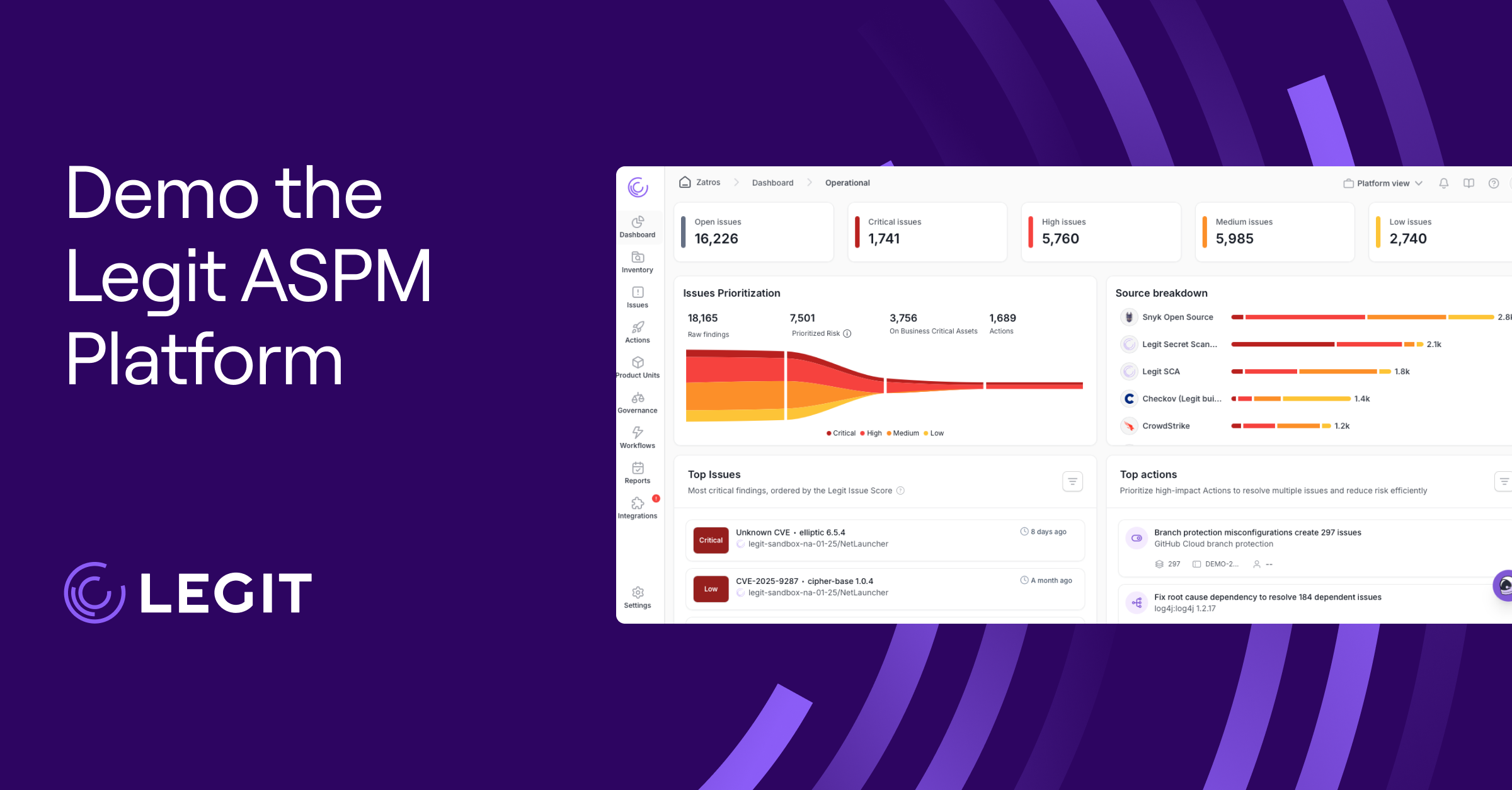As more and more processes move online, companies face an ever-growing attack landscape. Artificial intelligence worsens these threats from both sides. Developers using coding assistants accelerate development, but AI and vibe coding can open systems up to a greater risk of vulnerabilities in code generated by AI. Meanwhile, AI can also help hackers overcome technical barriers, making it easier for anyone to attack your networks and data.
In order to best protect your code, it’s important to understand what makes it susceptible to attacks in the first place. Read on to learn about five common types of code vulnerabilities, how to find them, and best practices for preventing attacks.
What Are Vulnerabilities in Code?
Code vulnerabilities are software security flaws that malicious actors use to change applications in unauthorized ways. These actors exploit weaknesses from poor output validations, insecure coding practices, and even overlooked configuration issues. In some cases, cybercriminals don’t wait for public vulnerability disclosures and simply inject malicious code into your products before they’re shipped downstream.
With the growing use of artificial intelligence, more security vulnerabilities are coming from AI-generated code or risky AI models. In fact, one study found that 45% of AI-generated code had security flaws. AI-generated code often bypasses code reviews as well, especially in fully automated continuous integration and continuous delivery (CI/CD) pipelines. A June 2025 Clutch survey found that 59% of developers have used AI-generated code they don’t fully understand, and that lack of understanding can open pipelines to bad actors.
No matter the cause, once hackers find vulnerabilities in source code, they can exploit the security flaws to gain unauthorized access. In some cases, they could even orchestrate zero-day data breach incidents, where they remain undetected in the system for a long time. By the time your team discovers the breach, the hackers may have already exfiltrated your data and sold it on the dark web—or locked your system for ransom.
5 Types of Code Vulnerabilities
Insecure code can be inserted into your supply chain or found and abused in countless ways. Knowing how to identify common examples of vulnerabilities means your team can create the right checks to catch them before gaps make it to production or compromise your software.
Here are five common code vulnerabilities your team should know about.
1. SQL Injections
SQL injections are one of the most prevalent and dangerous vulnerabilities affecting enterprise applications. These injections insert malicious code into queries, which grants hackers access to databases and sensitive information, like the kind used to build chatbots. They can then exfiltrate data, make unauthorized changes to records (and delete information completely), or deploy ransomware from inside.
2. Cross-Site Scripting (XSS)
XSS vulnerabilities open a space for hackers to inject malicious scripts into otherwise trustworthy websites. The malware only runs on the user’s end, making XSS vulnerabilities especially difficult for an organization to detect. Because it appears to come from a familiar source, users unknowingly execute the scripts, which can then lead to stolen authentication keys, altered web content, or hijacked sessions.
There are three main examples of XSS attackers use:
- Reflected XSS: Executes malicious scripts immediately after users interact with fake URLs.
- Stored XSS: Infects all users who view or otherwise access compromised content as the malicious code permanently embeds itself in databases and files.
- DOM-based XSS: Manipulates the document object model (DOM) in users’ browsers without server-side involvement.
3. Cross-Site Request Forgery (CSRF)
A forgery vulnerability tricks users into performing unwanted actions on an application where they’re already authenticated. For example, attackers might use CSRF to trick users into changing passwords, transferring money, or escalating privileges, which the bad actor can then use to compromise sensitive data. These attacks exploit a user’s trust in legitimate applications, which makes the malicious behavior harder to detect and mitigate.
4. Out-Of-Bounds Write
This exploit occurs when a program writes more data to memory buffers than the buffers can reasonably accommodate, causing it to extend beyond allocated memory (or overwrite adjacent locations). Hackers can then use this expanded memory use to crash a system or execute their own malicious code. Applications written in C and C++ are at a greater risk of these memory vulnerabilities because the languages don’t automatically enforce boundary checks.
5. Insecure Open-Source Dependencies
DevOps teams often rely on trusted open-source libraries to support their code, but outdated or unpatched components could contain common code vulnerabilities. Without regular monitoring, even trusted libraries can present cybersecurity risks. Attackers use a few different types of open-source malware to attach their malicious code to trusted libraries. Once downloaded, they can scan a system for these weaknesses and quickly exploit them before companies deploy updates and patches.
How to Find Vulnerabilities in Source Code: 6 Methods
Identifying and fixing vulnerabilities in source code often takes layered security testing techniques and an experienced team. Here are some of the methods a well-prepared team might use to identify security vulnerabilities:
- Static Application Security Testing (SAST): SAST audits source code or binaries to detect security vulnerabilities like SQL injection, XSS, and buffer overflows. This proactive method, sometimes called white box testing, catches vulnerabilities early in the code development process.
- Dynamic Application Security Testing (DAST): DAST replicates real-world attacks on running applications to uncover runtime flaws. Because it operates while the application is live and simulates real-world use, DAST can find vulnerabilities missed during development or SAST.
- Interactive Application Security Testing (IAST): IAST combines SAST and DAST to offer continuous insights during software development. By testing code from the inside out, this method reviews more code paths and checks more rules with better accuracy than SAST or DAST alone.
- Code Review: Structured code audits help developers catch logical errors, weaknesses, and overlooked vulnerabilities by conducting peer reviews. Teams can also implement automated tools to boost detection and cover basic problems alongside human review.
- Secrets Scanning: Secrets scanning can help companies find and protect sensitive data, such as misconfigured data repositories, commit histories, or exposed API keys. While secrets can be found at any stage, it’s critical this data never makes it to staging or production environments.
- Infrastructure as Code (IaC) Scanning: IaC scans evaluate configuration files and cloud resources for misconfigurations that could put systems at risk to prevent security flaws from making their way into production environments.
Best Practices for Managing Code Vulnerabilities
There is no method that can singlehandedly eliminate every possible item on a vulnerabilities list. Even the most effective and stacked methods will still have attackers willing to try their hands—or an AI model—against it.
Still, there are some best practices DevSecOps teams can follow to reduce cybercriminals’ success rates:
- Implement code obfuscation: Obfuscation adds an extra layer of protection to code by hiding sensitive logic and data structures. This makes it more difficult for attackers to reverse engineer or inject malicious code.
- Apply Zero Trust: Least-privilege and other Zero Trust principles reduce the risk of unauthorized access by ensuring everyone who enters has proper authentication. It also minimizes the success rate of privilege escalation after a data breach.
- Patch regularly: Whether you use open-source libraries or have built everything in-house, regular patches remediate issues and prevent hackers from exploiting vulnerabilities. This is critical for both internal software applications and the ones you deploy to users.
- Encourage secure coding practices: Set your DevSecOps team up for success by teaching them to code with cybersecurity in mind. Set secure code policies that cover critical areas like encryption, input validation, error handling and other safeguards, such as penetration testing.
- Unify with application security posture management (ASPM): ASPMs like Legit Security aggregate all security data into a single platform. This makes it easier to see what’s actually at risk across development and production environments.
Address Vulnerabilities in Code With Legit Security
Addressing vulnerabilities in code requires more than just piecemeal scanning. Legit Security continuously monitors software development pipelines, repositories, and CI/CD systems for risks, making your application security more comprehensive.
Legit consolidates and adds context to the findings from all your security scanners, so you can see your vulnerabilities in one prioritized place. You can also leverage Legit’s ASPM tools to access critical solutions like secrets scanning and AI discovery across each stage of your software development lifecycle.
Book your demo today to see how Legit Security’s ASPM works.
Download our new whitepaper.


